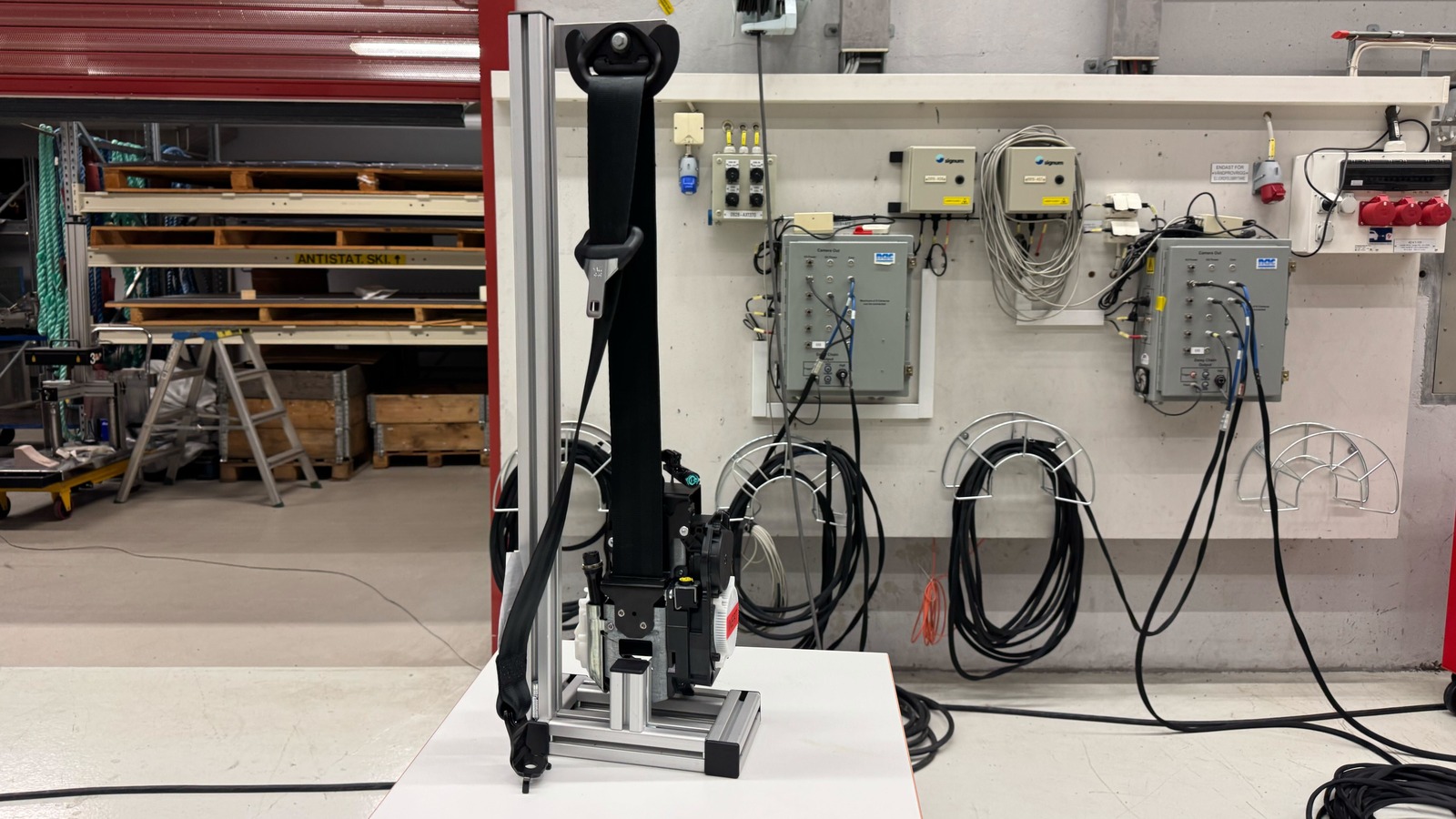More than any other car company, Volvo is synonymous with safety. Volvo scientists invented and implemented the first three-point seatbelts in 1959, the first side airbags in 1994, the first side curtain airbags in 1998, the first rollover stability control system in 2002, the first blind-spot monitors in 2004, the first pedestrian airbags in 2012, and more. Volvos have always been viewed as sensible, safe, and smart car choices, and that isn’t changing any time soon. Today, Volvo announced its latest safety innovation that will debut in the front seats of the upcoming EX60 electric crossover: multi-adaptive safety belts that instantly adjust the stiffness of the restraint system based on your build for optimal occupant protection during a crash.
These smarter multi-adaptive belts nearly quadruple the number of restraint force curves as current seatbelts, using real-time sensor data to customize protection based on the occupant’s height, weight, body shape, seating position, as well as the crash type and severity. They provide optimal restraint for the specific type of crash that the sensors inside and outside of the EX60 detect, reduce the risk of rib fractures for smaller occupants, and provide enhanced restraint for larger, heavier occupants. Volvo’s 50 years of crash safety research based on over 80,000 occupants involved in real-life accidents informed the new seatbelts, and they will continue to become smarter over time thanks to their ability to receive over-the-air updates.
Real-world crash data informed its development
In and around Volvo’s hometown of Gothenberg, Sweden, the carmaker has a team of “crash scene investigators” who quickly report to the scene of any crash involving a Volvo to investigate every possible variable involved in the crash. Since 1970 the Volvo Car Accident Research Team as it’s formally named, has collected and analyzed extensive crash data from about 30-to-50 real-life accidents each year around Gothenburg to inform future Volvo Cars safety innovations, including the multi-adaptive safety belt.
Modern seatbelts use load limiters that limit how much force they apply on the occupant’s body during a crash based on a maximum of three load profiles, but the new multi-adaptive belts enable 11 different load-limiting profiles while being just 7 mm wider than a regular pretensioner to better accommodate a wider array of body types and accident types. Volvo used the real-world data collected by its Car Accident Research Team to inform the engineering process for this new multi-adjustable seatbelt design, which aims to minimize injuries caused by suboptimal seatbelt forces. In order to do so, the new seatbelts instantly consider data from several different sensors and cameras inside and outside the car, though since Volvo is introducing the belt on the yet-to-be-unveiled EX60, it will not share exactly what kind of sensors the system uses just yet.
The driver monitor camera and other interior sensors will instantly monitor everything about the occupant, and when combined with exterior cameras and sensors, they tell the seatbelt which load profile will be the most appropriate to use to secure unique occupants in the safest way possible for unique crash scenarios. The belts can receive over-the-air updates to continuously improve their abilities as Volvo’s Car Accident Research Team collects more real-world crash data. Other details about Volvo’s latest safety innovations are slim since it debuts on a vehicle that hasn’t been released yet, but we will update you with specifics as soon as possible.




